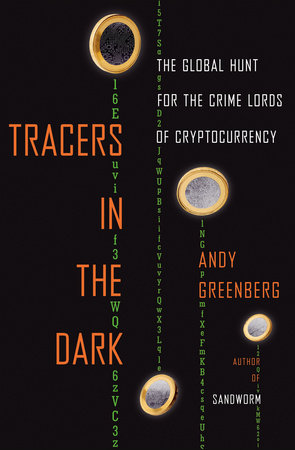“What is the point of introducing contestability if the system is illegal?” a questioner asked at this year’s Compiuters, Privacy, and Data Protection, or more or less.
This question could have been asked in any number of sessions where tweaks to surface problems leave the underlying industry undisturbed. In fact, the questioner raised it during the panel on enforcement, GDPR, and the newly-in-force Digital Markets Act. Maria Luisa Stasi explained the DMA this way: it’s about business models. It’s a step into a deeper layer.
.
The key question: will these new laws – the DMA, the recent Digital Services Act, which came into force in November, the in-progress AI Act – be enforced better than GDPR has been?
The frustration has been building all five years of GDPR’s existence. Even though this week, Meta was fined €1.2 billion for transferring European citizens’ data to the US, Noyb reports that 85% of its 800-plus cases remain undecided, 58% of them for more than 18 months. Even that €1.2 billion decision took ten years, €10 million, and three cases against the Irish Data Protection Commissioner to push through – and will now be appealed. Noyb has an annotated map of the various ways EU countries make litigation hard. The post-Snowden political will that fueled GDPR’s passage has had ten years to fade.
It’s possible to find the state of privacy circa 2023 depressing. In the 30ish years I’ve been writing about privacy, numerous laws have been passed, privacy has become a widespread professional practice and area of study in numerous fields, and the number of activists has grown from a literal handful to tens of thousands around the world. But overall the big picture is one of escalating surveillance of all types and by all sorts of players. At the 2000 Computers, Freedom, and Privacy conference, Neal Stephenson warned not to focus on governments. Watch the “Little Brothers”, he said. Google was then a tiny self-funded startup, and Mark Zuckerberg was 16. Stephenson was prescient.
And yet, that surveillance can be weirdly patchy. In a panel on children online, Leanda Barrington-Leach noted platforms’ selective knowledge: “How do they know I like red Nike trainers but don’t know I’m 12?” A partial answer came later: France’s CNIL has looked at age verification technologies and concluded that none are “mature enough” to both do the job and protect privacy.
In a discussion of deceptive practices, paraphrasing his recent paper, Mark Leiser pinpointed a problem: “We’re stuck with a body of law that looks at online interface as a thing where you look for dark patterns, but there’s increasing evidence that they’re being embedded in the systems architecture underneath and I’d argue we’re not sufficiently prepared to regulate that.”
As a response, Woody Hartzog and Neil Richards have proposed the concept of “data loyalty”. Similar to a duty of care, the “loyalty” in this case is owed by the platform to its users. “Loyalty is the requirement to make the interests of the trusted party [the platform] subservient to those of the trustee or vulnerable one [the user],” Hartzog explained. And the more vulnerable you are the greater the obligation on the powerful party.
The tone was set early with a keynote from Julie Cohen that highlighted structural surveillance and warned against accepting the Big Tech mantra that more technology naturally brings improved human social welfare..
“What happens to surveillance power as it moves into the information infrastructure?” she asked. Among other things, she concluded, it disperses accountability, making it harder to challenge but easier to embed. And once embedded, well…look how much trouble people are having just digging Huawei equipment out of mobile networks.
Cohen’s comments resonate. A couple of years ago, when smart cities were the hot emerging technology, it became clear that many of the hyped ideas were only really relevant to large, dense urban areas. In smaller cities, there’s no scope for plotting more efficient delivery routes, for example, because there aren’t enough options. As a result, congestion is worse in a small suburban city than in Manhattan, where parallel routes draw off traffic. But even a small town has scope for surveillance, and so some of us concluded that this was the technology that would trickle down. This is exactly what’s happening now: the Fusus technology platform even boasts openly of bringing the surveillance city to the suburbs.
Laws will not be enough to counter structural surveillance. In a recent paper, Cohen wrote, “Strategies for bending the arc of surveillance toward the safe and just space for human wellbeing must include both legal and technical components.”
And new approaches, as was shown by an unusual panel on sustainability, raised by the computational and environmental costs of today’s AI. This discussion suggested a new convergence: the intersection, as Katrin Fritsch put it, of digital rights, climate justice, infrastructure, and sustainability.
In the deception panel, Roseamunde van Brakel similarly said we need to adopt a broader conception of surveillance harm that includes social harm and risks for society and democracy and also the impact on climate of use of all these technologies. Surveillance, in other words, has environmental costs that everyone has ignored.
I find this convergence hopeful. The arc of surveillance won’t bend without the strength of allies..
Illustrations: CCTV camera at 22 Portobello Road, London, where George Orwell lived.
Wendy M. Grossman is the 2013 winner of the Enigma Award. Her Web site has an extensive archive of her books, articles, and music, and an archive of earlier columns in this series. Follow on Mastodon or Twitter.




